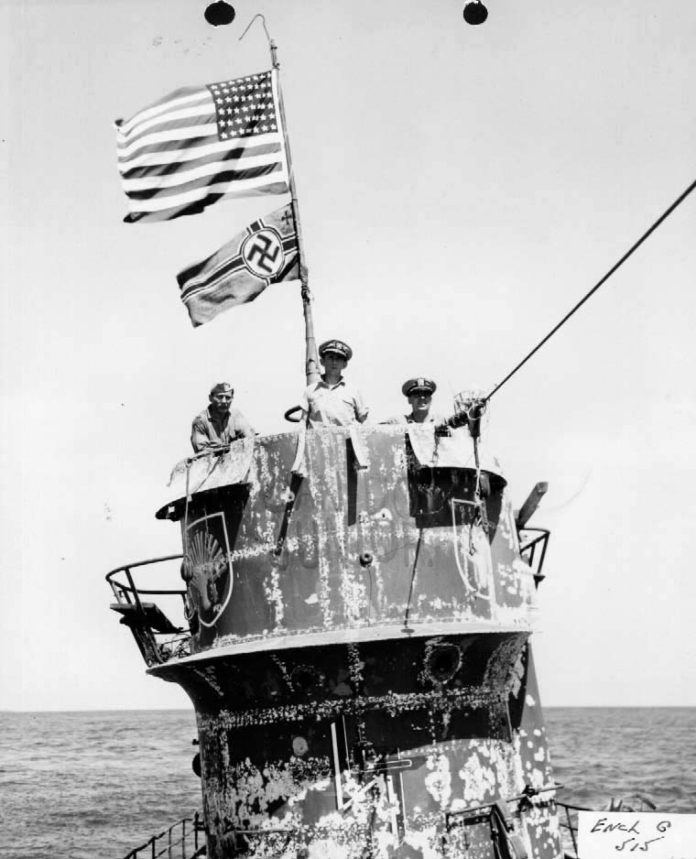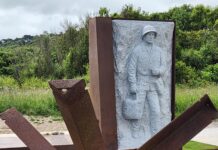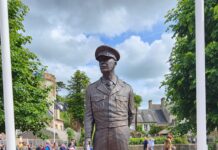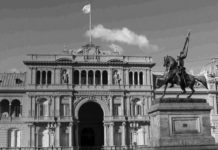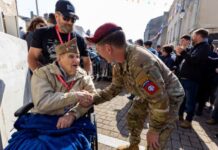Late in the forenoon watch on Sunday, June 4, 1944, a sonar man on USS Chatelain reported a suspicious contact 800 yards off the destroyer escort’s starboard bow. He immediately confirmed the sonar “ping” as coming from a submarine and Chatelain’s skipper, Lt. Cdr. Dudley S. Knox, peacetime lawyer and reserve naval officer, commenced his attack. Thus continued the saga of U-505, a German type IXC U-boat that began with her commissioning in Hamburg on August 26, 1941, and might well have ended off the west coast of Africa that June day almost three years later. But that was not to be U-505’s fate, for while Chatelain and the other ships comprising Task Group 22.3 were long ago scrapped and forgotten, U-505 is very much with us today. The story of how the submarine was captured and preserved as a memorial to American sailors lost in two World Wars is a fascinating footnote to the history of the second Battle of the Atlantic.
U-505
The wartime career of U-505 mirrored that of the entire World War II German U-boat force – initial success followed by defeat and annihilation. During her first cruise off the African coast in the spring of 1942, U-505 managed to torpedo four ships totaling 26,000 tons. It followed that cruise with another in the Caribbean where it sank another 20,200 tons of shipping. Then its luck changed for the worse. While on patrol off Trinidad it was struck by an aerial bomb and limped home for repairs. In Brest, French resistance workers managed to sabotage her, causing numerous delays before was again seaworthy. On her next patrol in June 1943, it was depth-charged off the Spanish coast by a British destroyer. After more in-port repairs, U-505 was again attacked off the Azores and this time had to return to port to have her electric engine replaced. During this latter incident, her skipper Kapitänleutnant Peter Zschech, convinced that his command was about to be sunk, shot himself in the control room, an inconvenient incident that was hushed up by the U-boat Command. Her new skipper, Oberleutnant Harald Lange, inherited a dispirited command when he first took U-505 to sea on Christmas Day 1943. His second patrol began on March 16 and was his last.
Daniel V. Gallery and his Hunter-Killer Group
Captain Daniel V. Gallery, a Chicago native, entered the U.S. Naval Academy in 1917 at the age of 16. Under wartime pressure his class was graduated a year early, in 1920, and he then competed in the 1920 Olympic games on the U.S. Wrestling Team. He next went to flight school and much later took first place in a 1930s era National Air Race, flying a Douglas Devastator torpedo bomber (Editor’s Note – Must have been in a special category since the Devastator was not noted for its speed or maneuverability. Check the fate of the TBDs of VT-8 at the Battle of Midway.)
The outbreak of World War II found him serving as Naval Attaché in London. In his spare time he ferried Spitfires from the Hawker factory to various RAF bases allowing him to claim that he was the only American naval aviator to fly Spitfires during the Battle of Britain, even if they were unarmed. After the U.S. entry into the war, he was given command of the Fleet Air Base in Reykjavik. It was during this tour that he conceived the idea of capturing a U-boat on the high seas, but that effort would have to wait until he had a more suitable command. In 1943, Gallery got his chance when he commissioned USS Guadalcanal (CVE-60), the centerpiece of TG 21.12 one of the new hunter-killer groups being organized to find and destroy German U-boats. (See the box on Hunter-Killer Groups). TG 21.12, sailing from Norfolk and operating off the African coast, was able to locate and sink the U-544 on its maiden patrol. In March 1944, Captain Gallery’s Task Group 22.3, formed around Guadalcanal, forced U-515 to the surface and sank her. (Her skipper, Kapitänleutnant Werner Henke, was among the top twenty U-boat commanders.) The next night Guadalcanal’s aircraft caught U-68 running on the surface in moonlight and sent her to the bottom, with only a single survivor. Before TG 22.3 sailed from Norfolk again on May 15,1944, Gallery ordered the formation of boarding parties on each of his ships to attempt the capture of a U-boat when and if the right circumstances presented themselves.
Gallery’s chance came 150 miles west of Cape Blanco, French West Africa when Chatelain made sonar contact with an unidentified submarine. Because his ships were all very low on fuel, Gallery had, two days earlier, reluctantly broken off the search for a U-boat known operating in the area and was taking TG 22.3 north for a fueling rendezvous at Casablanca. By his best estimate, the Task Group should have passed over the area where a U-boat was thought to be operating a couple of days before, but the fuel situation was too critical to allow any further delay. (Interestingly, in his detailed account of these events, Gallery never mentions the source of his intelligence, which later was revealed as coming from the F-21 submarine tracking room in Washington, D. C.)
Sunday morning was clear with a moderate breeze and light seas Gallery noted as he climbed up to Guadalcanal’s bridge after attending Mass on the hanger deck. He had no more settled into his captain’s chair shortly after 11 a.m. when the TBS “squawk box” broke into the peaceful morning with the words: “Frenchy to Bluejay – I have a possible sound contact!” “Frenchy,” Chatelain, went into its attack mode (to battle stations) as it ran down the bearing to the contact. Gallery swung “Bluejay,” Guadalcanal, to port and brought her to full speed. If the contact proved to be a U-boat, the battle zone was no place for a jeep carrier. While two other DEs in the screen, Jenks and Pillsbury raced toward the contact, Gallery launched two additional “turkeys,” i.e., Wildcat fighters, to support the two already aloft. (Editor’s Note: Gallery only mentions only Wildcats as participating in the battle, but Navy photographs all identify the aircraft shown as TBM Avengers, torpedo bombers manufactured by General Motors’ Eastern Aircraft Division after Grumman ceased production of the original TBF Avenger. VC-8, Guadalcanal’s composite air squadron, flew both planes.)
Chatelain overran U-505 before making a positive identification so was unable to fire any of her weapons; Cdr. Knox brought her around in an attempt to close the contact for a second time. By then, pilots in two of the patrolling Wildcats spotted U-505 beneath the surface and began to make runs over her firing their guns into the water to mark the sub’s location. That action confirmed Knox’s sonar information. Chatelain fired her forward hedgehog battery of 24 depth bombs as it bore down on U-505 the second time without scoring a hit, and then, as it passed over the sub, offloaded a dozen or more depth charges. The depth charged did their job. After an uncontrolled dive to 755 feet, Lange brought the damaged U-505 to the surface, whereupon the wounded sub, rudder jammed hard right, turned toward Chatelain and fired a torpedo; Chatalain fired a torpedo back. Both missed. Following Gallery’s standing orders, the ships and aircraft now engaging U-505 fired only their lighter weapons (3”/50 guns and machine guns) to avoid seriously damaging her hull and to convince the crew to hastily abandon ship. The plan worked. With only one shipmate, Hans Fisher, dead and an 8-inch “sea strainer” opened to the sea, the remainder of the crew went overboard, abandoning U-505 to her fate.
The Capture of U-505
The first boarding party to reach the abandoned sub was commanded by Lt. j.g. Albert L. David from USS Pillsbury, another DE in the Task Group. David, followed by two of his men, Art Knispel and Stan Wdowiak, entered the sub through the conning tower hatch, not knowing if it was abandoned. (David later remarked that now he knew how Jonah felt entering the belly of the whale, and his bravery earned him a Congressional Medal of Honor. Knispel and Wdowiak both received Navy Crosses.)
While the three boarders searched for codebooks, logs and other material, another member of the boarding party, Zenon Lukosius, found the open sea strainer with its cover lying close by and, just in the nick of time, shut down the rush of seawater into the bilge. But, matters remained critical on the disabled sub. It was down by her stern with her rudder jammed hard right. Shutting down her electric engine caused her to settle by the stern, submerging the conning tower hatch. Without a tow, it might well founder. When Pillsbury came along side to take her under tow, it collided with one of U-505’s forward diving planes and had to retire with a serious hole in her hull. Eventually, Guadalcanal maneuvered into a position ahead of the sub and got a towline across. While all this was going on, some member of the boarding party hoisted a huge American flag from the bridge of the captured U-boat.
Meanwhile, some “demolition experts” from Guadalcanal searched the boat for explosive charges that they had been told would number 14. They found 13, all unarmed, but were unable to enter the stern torpedo room because of what looked like a booby-trapped watertight door. There matters rested until Gallery and Guadalcanal’s Engineering Officer, Cmdr. Earl Trosino, came aboard the next day, studied the open fuse box blocking the dogs on the door, decided that it was not a booby trap, closed it, and then carefully loosened the dogs in case the compartment was flooded. It was not, so Gallery, Trosino and other members of the boarding party were able to manually crank the rudder amidships. Even later, while U-505 was being towed, Trosino disengaged the boat’s diesel engines, which allowed the propellers to spin freely turning the electric motors on the two shafts into generators. He then used this source of power to recharge the boat’s batteries. With battery power now available, he managed to pump the bilge dry.
Topside matters were dicey as well. The first towline broke during the night. USS Pope dropped back to assist the holed Pillsbury while it underwent emergency repairs. All night long the remaining three DEs circled Guadalcanal and U-505 in case another U-boat was in the area. At dawn, Guadalcanal’s crew got a 2 ¼ inch wire towline attached through the sub’s bullnose and resumed her vital role as tug.
Before he boarded the U-505, Gallery had gotten off a message to CinCLant and Cominch, “Request immediate assistance to tow captured submarine U-505.” After initial disbelief, the bureaucracy responded quickly, first vetoing Gallery’s plan to tow his prize to Dakar; he didn’t think his ships had enough fuel to make Casablanca. Instead, Washington ordered TG 22.3 to Bermuda, and then dispatched the seagoing tug Abnaki to take over the towing job, the fleet tanker Kennebec to refuel the task group at sea, and the seaplane tender Humboldt with another DE, Durik, to accompany TG 22.3. Some of the boarding party had again been busy topsides, now hoisting the stars and stripes over a smaller swastika and painting “Can Do, Jr.” on the conning tower. (Gallery referred to Guadalcanal as a “Can Do” ship and he tells us that “Jr.” stuck to U-505 for the rest of its 2,500-mile tow to Bermuda.) After refueling, Jenks, another of the DEs, steamed at top speed for Bermuda with the captured intelligence material, some ten mail bags worth weighing 1,100 pounds.
Then there was the matter of souvenirs. Knowing the propensities of his seamen, Gallery ordered the all items collected from U-505 be turned in immediately and that if anyone was found holding on to one after the deadline, the punishment would be swift and severe. He softened his order by promising to see that they would be returned when the situation permitted, a promise he lived to regret as the souvenirs all later disappeared.
The passage to Bermuda was uneventful. Both the submarine and its crew were kept under wraps for fear that OKM (Oberkommando der Kriegsmarine) would learn of her capture and be prompted to change its U-boat codes and ciphers on the eve of the Normandy invasion. In fact, it was later said that Adm. Ernest King was so angry about the threat to the Allied code breaking efforts that he threatened to court-martial Gallery. The British were also concerned about the possible threat to their code-breaking efforts, leading the First Sea Lord, Adm. Andrew Cunningham, to cable King that he was warning his Flag Officers commanding the West Africa Forces and the Mediterranean Approaches to maintain complete secrecy. As luck would have it, OKM was warned of the possible capture in late 1944 or early 1945 when a German officer in a Canadian POW camp managed to get word out that a U-boat had probably been captured intact. In any case, U-boat Control was in the process of implementing a new high-speed communication system code-named Kurier, however the war ended before it was fully operational. That there was no leak from an American source says something about the loyalty of the 3,000 men under Gallery’s command.
The intelligence trove from U-505 was considerable, as large and as important as those captured earlier in the war from U-110 and U-559. Listed below are only a few of the more important items from this intelligence coup:
- Samples of the new T5 acoustic torpedo.
- The U-boat cipher keys for June 1944.
- The current grid-chart cipher used for position reporting.
- A description of “Electra-Sonne,” an electronic navigational system similar to Loran and the RAF’s “Gee,” but superior.
One other fascinating item turned up as well. A member of the boarding party found a book titled “Roosevelt’s Kampf” next to Lange’s bunk. This piece of anti-Roosevelt propaganda, with a suitable inscription, was duly sent to the President who added it to his library at Hyde Park.
The Navy awarded Gallery a Navy Cross and TG 22.3 a Presidential Unit Citation for the capture of U-505. Gallery and his two younger brothers, both Rear Admirals as well, had a guided missile frigate named after them, USS Gallery (FFG-26), commissioned in December 1981 and stricken from the Navy List in September 1996. Gallery was then leased to Egypt and renamed Taba (F916).
Deciding U-505’s fate
After the surrender of Germany in May 1945, U-505 was moved to the United States where it was exhibited in various Atlantic and Gulf ports in support of the Seventh War Bond Drive, i.e., if you bought a bond you could visit the submarine. After the Pacific War ended in August, U-505 was moved to Portsmouth, New Hampshire where it slowly rusted away. The Navy decided to scrap her under provisions of the Four-Power Treaty that dictated that fate for all surrendered U-boats. Gallery, now a Rear Admiral, protested that U-505 had not been surrendered, but rather was captured, and therefore was the property of the United States. He raised such a furor that the Navy Department relented. About this time, one of Gallery’s brothers, Father John Ireland Gallery, a former Navy Chaplain, came up with the idea of moving the U-boat to Chicago as a memorial to the sailors lost in the two Battles of the Atlantic. When Father John mentioned the idea to Major Lenox Lohr at the Chicago Museum of Science and Technology, he received an enthusiastic response since the CMST had been trying to obtain a submarine to display for over a quarter of a century!
The idea was not an easy sell in the late 1940s, but eventually the Chicago City Council passed a resolution requesting that the Navy donate U-505 to the Museum. Influential publicist Col. Robert McCormick supported the effort through his influential Chicago Tribune. But, it finally took a Congressional resolution to get the job done: the Navy could donate the boat, but the Museum would have to pay for its repairs and transportation to Chicago. The estimated bill ran to $250,000. A committee of civic minded Chicagoans raised $125,000 in cash and obtained the remainder through pledges for services-in-kind from various businesses. Seth Gooder, a well known Chicago civil engineer with expertise in moving buildings, volunteered to head up the project. He proposed a scheme for using a dry dock to beach U-505, then moving it across Lake Shore Drive to the Museum much as you would move a house.
On May 14, 1954, after the Portsmouth shipyard had declared her seaworthy, U-505 began her last voyage. The tug Pauline L. Moran towed her up the St. Lawrence River to Lake Erie, where the Coast Guard cutter Arundel picked up the tow and took her to Calumet City on Lake Michigan where it could be prepped for the last, overland leg of her voyage. Both Gallery and Trosino, now an engineer on a Sun Oil Company tanker, accompanied U-505 part of the way. After stopping at several Great Lakes ports in mid-June, U-505 was towed with much fanfare up the Calumet River (editor’s note: thank you to readers Gerrie Jankun and Richard Bulanda for their help in researching this part of the story).
Preparations immediately began to ready the boat for its move overland to the Museum lawn. It was first relieved of about 90 tons of ballast, and then put into a floating dock where a steel cradle was built around her hull. Next, the sub and cradle were jacked up so that steel rollers could be inserted under the cradle allowing the boat to move easily over the rails already laid in the dock. Now came the tricky part. Gooder had a channel, deep and wide enough to take the floating dock, dredged into the lake bottom that ended at a pier on which rails had been laid. His plan was to bring the floating dock into the channel, line up the rail ends and pull U-505 ashore. There were two factors that made this a difficult operation. First was a force of nature over which Gooder had little control. It seems that storms passing over Lake Michigan produce a phenomenon known as a seiche, a surge of water on the lakeshore resembling a tide or tsunami, only less predictable. The other factor concerned the lightening of the floating dock as U-505 came ashore. If not carefully controlled, the dock would rise in the water, destroying the rail alignment.
The operation began on Friday, August 13th when two tugs maneuvered the floating dock into position; the rails lined up to within a sixteenth of an inch. After a small seiche subsided, workers began to inch the boat ashore, carefully flooding the dock as the U-boat weight was transferred to the pier. The operation was successfully completed shortly after dark on the 13th.
To complete the move, the Outer Drive was closed at 7:00 p.m. on September 3rd, rails laid across the roadbed and U-505 pulled across at about eight inches a minute. Some 15, 000 people watched this operation for much of the night. Now all that had to be done was to move U-505 into the special three point cradle that had been constructed next to the Museum, cut two doors in her port side and connect the new exhibit to the Museum with covered passages. The dedication of the memorial took place on September 25, 1954, with 40,000 people in attendance, including about 100 members of TG 22.3 including nine of the original boarding party. Adm. William H. Halsey gave the principal address, while Arthur Godfrey acted as MC. Bishop Weldon, a chaplain on Guadalcanal in June 1944, delivered the invocation. Secretary of the Navy Charles S. Thomas attended the dedication ceremonies as well; his son, former Ensign Hayward Thomas, had been an engineering officer on Guadalcanal when the sub was captured.
The memorial was an instant hit. It saw over half a million visitors in its first year; by May of 1967, the visitor count reached 7,800,000, about all U-505 could handle. One frequent visitor to the memorial in the 1980s and 90s was Hans Jacob Goebeler, a former control room mechanic on U-505, who had moved to the Chicago area after retiring from his post-war job in Germany. When visiting his old boat, of which he was enormously proud, he was want to giving impromptu talks about his experiences up to and including her capture. His surprised audiences were captivated and enthralled by these performances. Goebeler also organized reunions that brought survivors of U-505 and TG 22.3 together in Chicago. He later moved to Florida because of his wife’s failing health and died there on Valentine’s Day 1999, just weeks before his memoirs appeared in print.
A New Home
A half-century of exposure to Chicago’s weather took its toll on the exposed hull of U-505. In 1997, the museum decided that constructing a new building that would not clash with the museum’s classical-revival architecture could best preserve the boat. It was decided, in conjunction with the Chicago firms of Goettsch Partners (architecture) and Halvorson and Partners (engineering) to excavate a new home for U-505 near Lake Michigan and the Lake Shore Drive. Given the height of the water table, the engineering team found it necessary to enclose the seven-acre site with “sheetpiling” before pumping the area dry. The site houses not only the new exhibit hall, but also an underground pedestrian underpass under Lake Shore Drive. From the inside, the resulting underground structure strongly resembles the U-boat pens the Kriegsmarine built in large numbers along the Atlantic coast. The resulting 300 by 90 foot floor of the exhibition hall was 40 feet below grade; the walls were 38 feet high.
Aside from the engineering problems associated with building such a massive structure below grade alongside a busy thoroughfare, engineers had to come up with a plan to move the aging submarine to its new home located just behind the east pavilion of the Museum. The job of moving the U-boat was given NorSar LLC, an Everett, Washington firm that specializes in moving heavy ships. In essence, the U-boat’s hull was first reinforced, and then moved on steel girders mounted on 18 wheeled dollies fitted with load adjusting hydraulic rams until it was next to the open hall, a distance of 800 to 1,000 feet. Massive steel girders were erected in the sunken chamber with arms extending out to the concrete sidewall. The boat, some 850 tons of it, was first moved out on the arms until centered over its chocks, and then lowered in four inch steps over two days into a position one inch above the three permanent supporting chocks. The gaps were then filled with a quick-setting epoxy material. Later, the hull was further braced with pipe struts. The entire move took five days and was completed on April 21, 2004. You can get a much better idea of the process by viewing a time-lapse sequence found on the Museum’s web site at www.msichicago.org. (On the home page, click on the “U-505 Submarine” button, and then the “Exhibit” button on the top banner. Next click on the “Restoration and Relocation” button. The entire web site is a gold mine of information about U-505, well worth the time spent exploring it.)
Next, the U-boat was wrapped in plastic sheeting and a temporary roof built to protect it from potential damage while the pen’s permanent roof was under construction. The final steps were to cover the new structure and its underground link to the main museum with a waterproof membrane, fill the voids with “geofoam” and then cover the site with soil and new sod so the lawn would be restored to its pre-construction state.
Visiting U-505
To visit U-505 in her new home requires only a Museum general admission ticket ($11 for non-Chicago residents. Seniors over 65 save a buck-fifty). However, there are only a limited number of $5 on-board, timed tour tickets available each day. The Museum advises the public to purchase these special tickets in advance through its web site, or plan on arriving at the Museum before 10 a.m. and early in the week (Monday or Tuesday). It takes about one and a half hours to see the boat and the exhibits.



